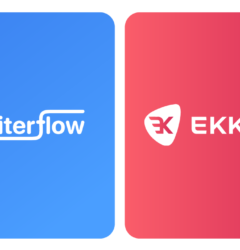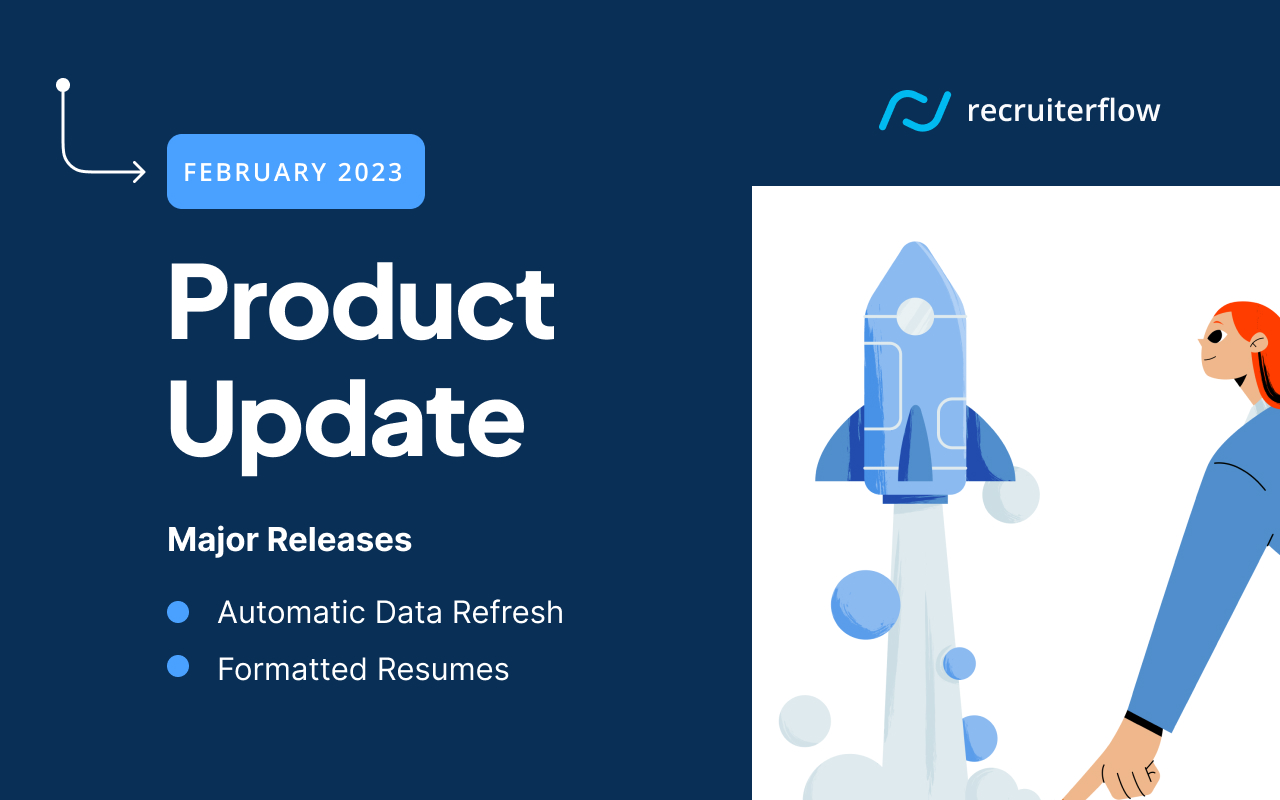
11 Unconventional Recruitment Methods Top Recruiters Use

There are many different methods of recruitment that recruiters use to discover and hire the best people. While many conventional recruitment methods help recruiters connect with potential employees, recent recruitment trends have disrupted the way recruiters hire talent.
A major part of the millennial generation is choosing to freelance over regular jobs, owing to higher flexibility, more growth, and increased income opportunities. At the same time, Generation Z is starting to enter the workforce.
Additionally, the digital revolution has transformed how businesses interact with their customers and their internal staff members.
From finding the best candidates to onboarding new employees for your clients, technologies like artificial intelligence (AI), machine learning (ML), and recruiting automation are becoming more prominent for recruiters.
Needless to say, it can be quite a challenge to find the best methods of recruitment and hire the ideal candidate you’re looking for as an HR or staffing agency.
We connected with our clients aka staffing agencies to find the top recruitment methods that do wonders for them, regardless of fierce competition. In this article, we will be sharing 10+ innovative recruitment methods that top recruiters use.
Top 10 recruitment methods recruiters should we aware of
There are plenty of great examples to help you give an idea about how you can optimize your recruitment strategy and make it more effective.
1.Programmatic Advertising
Programmatic advertising has disrupted the recruitment landscape with its sheer ability to use in-depth analytics and valuable data to target the right candidates. In simple words, programmatic job advertising is an automated process that lets you purchase, publish, and optimize your job ads with the help of recruiting software like Recruiterflow.
It’s evident that programmatic advertising has quickly gained popularity and is only going to rise. And there’s a good reason for that. This technology puts your job ads in front of a particular segment of job seekers that fit the parameters you have defined in your job posting.
Also, programmatic job advertising:
- Uses sophisticated algorithms and strategies like targeted job ads, real-time bidding, campaign optimization,
- Uses intelligent technology like big data to scour through thousands of platforms, people, jobs, etc to place your job ad at the right place online.
A major benefit of using programmatic advertising is that it is largely automated. So, recruiters can easily create a job post ad and let the software take care of the complex algorithms in the back end while focusing on other important tasks.
It’s a big time-saver and cost-efficient method of recruitment that plenty of recruiters use today.
2.Mobile Recruitment
With the ubiquity of smartphones, it’s no surprise that millennials and Gen Z make job searches on their mobiles.
There has been a major shift in power from employers to candidates where the latter have higher expectations for communication, interviewing, and new hire onboarding processes.
According to Indeed, 78% of millennials, 73% of GenXers, and 57% of baby boomers have used their smartphones for job search. Thus it’s essential for recruiters to increase visibility on mobile devices.
A mobile-friendly recruitment process facilitates and streamlines the recruiting process by making it easier for prospective candidates to find your job ads and reach out to you.
Here are a couple of ways you can make your recruitment process mobile-friendly:
- Optimize your website for mobile,
- Make sure you provide clear job descriptions and requirements that are skin-friendly,
- Double-check that all the links to current opportunities are working,
- Measure analytics of the career section of your website to keep track of the mobile traffic,
- Use texting to keep your candidates updated with new opportunities,
- Use texting to keep a candidate updated with their application process throughout the recruiting process.
Pro tip: If your recruiting software supports recruiting automation with built-in texting, this can be automated easily.
- Offer candidates the ability to receive notifications and newsletters to stay informed about the hiring process.
Candidates expect a fast and easy application experience, so making applicants wait or ask them to fill out multiple application pages, especially on a mobile device isn’t going to cut it anymore.
Top recruitment agencies and HR professionals know the importance of mobile-optimized job postings and they are leveraging this opportunity to sweep off the top of the talent.
3.Video interviewing
Is video interviewing really an innovative recruitment strategy? Absolutely yes. Using video interviewing software is a great option to hire candidates more effectively and efficiently.
Virtual interviewing allows both candidates and interviewers to talk in real-time from anywhere. This comes with heaps of benefits, especially in today’s time where remote work has become a new norm. Plus, it saves a lot of time and is an affordable option as compared to traditional recruitment methods.
Employers are increasingly turning to video interviews as an efficient method of recruitment. But there’s one thing that helps recruiters stand apart from others, ensuring they conduct video interviews with prospects in a hassle-free manner – video technology.
Video technology allows recruiters to implement a targeted strategy to invite top candidates and hire from the right pool of talent. Additionally, some intelligent video technology can even record and analyze eye movements, facial expressions, body language, and verbal responses to predict a candidate’s success rate in their future job.
Other features you might want to look for in video interviewing software can be live on-demand video interviews, pre-recorded video interviews, branded screen, recording portal, automated reminders, completion reports, ATS integration, and Zapier integration.
4.Passive Candidates
Passive candidates are professionals who are not actively looking for a job but still may be open to change. Given these professionals are usually satisfied with their jobs, recruiting them might require more effort, but if they possess the right skills needed for the job, it’s worth it.
These types of candidates are often suited for highly skilled positions where there is a skill shortage. In fact, the best talent is usually in the hiring market within 10 days, which means the competition to recruit the best candidate is real and tough.
Social media platforms like Twitter, Facebook, and LinkedIn have billions of users and a major part of these platforms consists of passive candidates that will be a great fit for your company.
Also, check Top Recruitment Marketing Strategies for Staffing Agencies To Attract High Ticket Clients.
In addition, passive candidates are 17% less likely to need training or skill development opportunities as compared to active candidates.
Here are some ways you can find and connect with potential candidates:
- Use social media platforms to connect with your potential hire,
- Make targeted efforts by using various filters on social media platforms. For example, search for the title “content manager”, location “United States”, and industry “Retail” on LinkedIn if you’re an eCommerce brand looking for a content manager in the US.
- Use automated software like RecruiterFlow to keep track of all your candidates and create a strategy to stay in touch with your top candidates.
- Use automated email sequences to get in touch with passive candidates and get their attention. You can use these excellent cold email templates to reach out to passive candidates.
5.Employee referrals
Employee referrals (programs) are increasingly gaining popularity as one of the most efficient and cost-effective recruitment methods. Surveys show that employee referrals reduce time and cost per hire, giving the highest ROI of any other recruitment method.
It’s used by large and small enterprises alike to filter out the best candidates. A survey by Deloitte found that 51% of organizations say employee referrals are the number 1 recruitment strategy they use. Referral hires are also often more productive, efficient, and less likely to leave.
Salesforce, the US cloud computing giant, offers a great employee referral program where they offer both – monetary and other rewards to its employees. The interesting thing is the way they conduct these employee referral programs. The company organizes Recruitment Happy Hours, where employees can invite the people they want to refer.
Check out some unconventional and hugely successful employee referral program ideas.
This way, it’s engaging and fun for the employees and their referrals. In addition, it is also an efficient way of getting a large pool of talent in one place and letting recruiters informally meet the potential hires.
6.Texting
While this might seem like a self-explanatory recruitment method, the question is why recruiters should use it and how effective it is to find the best candidate.
Employers want to be able to reach their potential candidates wherever they are, instantly. Candidates respond to emails only about 2% of the time, whereas the average response rate to text messages is 37%, a considerable spike from the conventional email recruitment method.
Job seekers are likely to be on the move, and unconventional communication channels like texting are cutting through the noise right now. More people are dependent on their mobile devices like tablets and smartphones to manage their day-to-day tasks.
Qualified candidates aren’t just looking for a job or a company to join, they’re searching for a company that offers a holistic, engaging journey throughout the hiring experience. This means including more compelling recruitment methods like texting to make it easier and more convenient for potential candidates to engage with you.
Today, as recruiters work at breakneck speeds scouring through thousands of applications and shortlisting candidates, time matters. Implementing automated processes in your recruitment strategy will help you save time and focus only on the candidates that are most likely the ideal fit for your needs.
For example, using automated recruiting software to send confirmation texts to a candidate after they have successfully submitted their application. Similarly, a reminder for their interview or a follow-up text to let them know about the progress of the hiring process will let them keep engaged and satisfied.
7.Social media
Social recruiting, also known as social media hiring, is a must-have recruitment strategy for every recruiter, regardless of their industry. About 70% of hiring managers said they have successfully hired candidates using social media.
Using social media for recruiting can include targeted outreach using filters available on social sites, or advertising jobs through crowdsourcing or HR vendors, where applicants share their resumes, personal details, and online social networks.
Social recruiting opens the gateway to an immensely large pool of talent that entails both active and passive candidates. Especially when it comes to millennials who are forming the major part of the global workforce in today’s time and generation Z which is highly active and engaged on social networks.
If you’re planning to use social media recruiting, it’s important to reach out effectively and target only specific people that are more likely to be interested in your offer.
Here are a few ways you can use social recruiting:
- Build your company’s social reputation
Job seekers tend to consider a more comprehensive approach when it comes to their potential employers. They are more inclined to engage with a brand that shares similar values with them. Share content on your socials that shows your company’s working environment -how flexible it is or the social agendas you work for (women empowerment, diversity, and others).
- Leverage video content
Use video content such as webinars, product demos, interviews, live sessions, and others. People love to emotionally connect with brands and discover the behind-the-scenes of an organization. Let people have a sneak peek inside your company and let them be a part of your organization.
8.Virtual reality
Virtual reality (VR) is an interactive, immersive experience that recruiters can use in various ways to enhance the recruiting process. Especially when the aging workforce is heading toward retirement, recruiters need effective ways to find and recruit new talent, without being overwhelmed in the process.
Virtual reality recruiting is one of the ways recruiters are adding more experiential and immersive elements to the recruitment and onboarding process. Such an engaging process allows candidates to get a gist of the company culture and picture themselves in the office without having to be physically present.
VR Technology can practically help recruiters showcase the company culture, offer virtual tours of company offices and headquarters, etc – basically mirror real-life experiences to allow candidates to experience their work virtually.
Combined with artificial intelligence and the use of image segmentation, virtual reality recruitment is a cutting-edge strategy that can help recruiters use “on-the-job” skills assessment tests to evaluate candidates’ talent and knowledge.
For instance, Accenture UK has incorporated VR in its recruitment process, allowing the assessment of a candidate’s responses and skills through VR simulation. This helps in understanding an individual’s true capabilities and potentially more than a regular questionnaire.
9.Use data
Currently, the unemployment rate in the U.S. is 6.1% with 9.8 million people looking for jobs. This includes applicants from various industries with various skills, experience, backgrounds, interests, etc.
Moreover, there are multiple ways job seekers are using to communicate with potential employers – emails, SMS, social platforms, direct applications, and others.
Using data to narrow down your search and filter out the top talent for a position is every recruiter’s best bet today. Regardless of the channel, you are using to recruit a candidate, it’s essential to dive deeper into usable data and analyze which channel is getting the maximum results.
Consider questions like:
- What channel do you use to communicate with potential hires?
- How long does it take to successfully hire a candidate from a channel?
- Which channel gets you the most successful hires?
10. Employer review sites
96% of job seekers say it’s essential to work for an organization that embraces transparency. To get a better understanding, candidates often turn to employer review sites such as JobSage to see what a company’s existing and former employees have to say about it.
In an era of digital-savvy professionals, researching a company’s background and culture plays an important role in helping them choose the right organization.
So as a recruiter, you might want to adopt this recruitment strategy and make sure you showcase your company’s culture on employer review sites and also identify the pain points of your employees.
11. Recruitment through Recruiterflow
RecruiterFlow, a complete recruiting operating system is built to do the heavy lifting for recruiters and staffing agencies so they can focus on what’s more important. For instance, the software captures all the candidate data right from your inbox and helps you send out communications in an automated manner.

Revolutionize Your Recruitment Process with Automation
Most stages of the recruitment process are time- and labor-intensive, meaning recruiters have to spend hours designing job boards, scouring through data, sending out emails, and onboarding candidates. With RecruiterFlow, it becomes easier to source candidates and manage the entire recruitment pipeline without much hassle.
You can sign up for a 14-day free trial without a credit card. So if you’re looking for an automated tool that can perform admin tasks for your recruitment process, we’d recommend you give RecruiterFlow a try.
Ready to use these recruitment methods to boost your recruitment process?
There are plenty of recruitment methods available out there. While some organizations stick with conventional methods like posting on job boards or sending emails, we recommend that you go beyond and try innovative recruitment methods that help you improve your hiring process.
Also, when you combine technology like automated software, VR, and AI, you can take your hiring process up a notch and not only save yourself time – but offer a holistic, immersive experience to your candidates.
Book a free demo.






Sagrika Jain